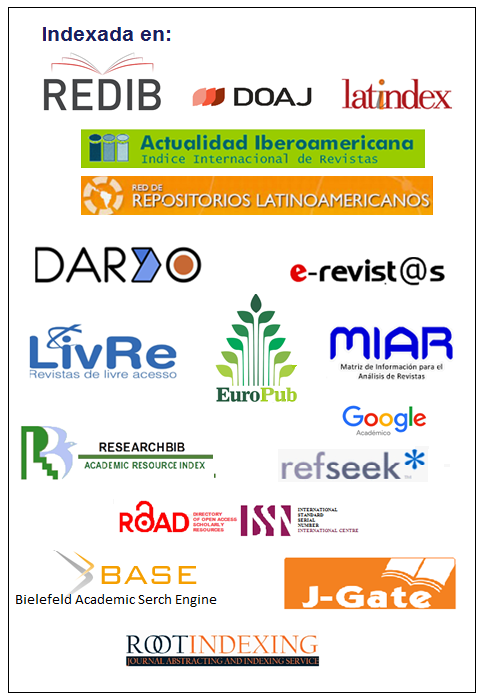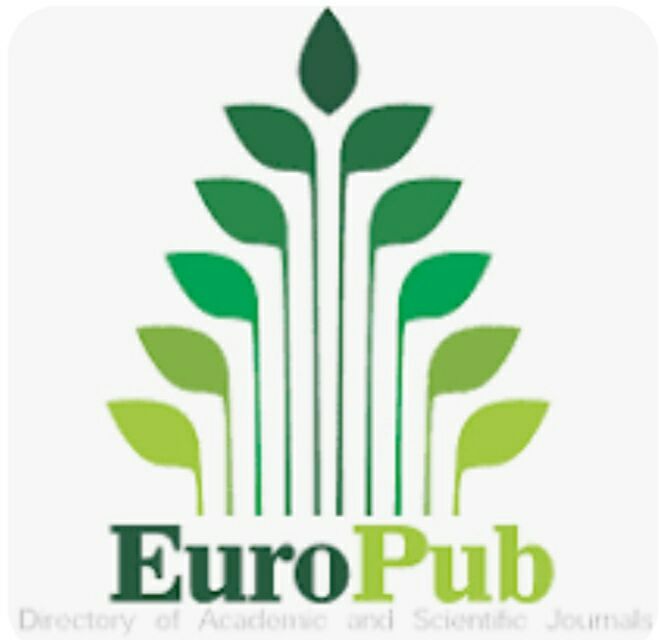Factors contributing to healthy aging
Keywords:
aging, elders, daily activities, cognitive functions.Abstract
Aging is a multidimensional phenomenon resulting from changes in the physiological system performance due to intrinsic and extrinsic causes. The investigation involved the review of materials dealing with changes occurring in the nervous system and cognitive functions in the elderly in addition to the elements that contribute to the damage or improvement of their performance during aging. It was concluded that the changes in the nervous system performance during aging lead to a decrease in cognitive performance influenced by diverse factors related to the individuals lifestyle.Downloads
References
AARTSEN, M. J.; SMITS, C. H.; VAN TILBURG, T.; KNIPSCHEER, K. C. & DEEG, D. J. 2002: Activity in older adults: cause or consequence of cognitive functioning? A longitudinal study on everyday activities and cognitive performance in older adults. Journals of gerontology. Series B: psychological sciences and social sciences. 57(2): 153-162.
ALLAIN, P.; NICOLEAU, S.; PINON, K.; ETCHARRY-BOUYX, F.; BARRÉ, J.; BERRUT, G.; DUBAS, F. & LE GALL, D. 2005: Executive functioning in normal aging: A study of action planning using the Zoo Map Test. Brain and cognition 57(1): 4-7.
BAILEY, R. & ARAB, L. 2012: Nutritional prevention of cognitive decline. Advances in Nutrition: An International Review Journal 3(5): 732-733.
BATTY, G. D.; WENNERSTAD, K. M.; SMITH, G. D.; GUNNELL, D.; DEARY, I. J.; TYNELIUS, P. & RASMUSSEN, F. 2009: IQ in early adulthood and mortality by middle age: cohort study of 1 million Swedish men. Epidemiology 20(1): 100-109.
BENITO-LEÓN, J.; MITCHELL, A. J.; HERNÁNDEZ-GALLEGO, J. & BERMEJO-PAREJA, F. 2013: Obesity and impaired cognitive functioning in the elderly: a population-based cross-sectional study (NEDICES). European Journal of Neurology 20(6), 899-e77.
CEFALU, C. A. 2011: Theories and mechanisms of aging. Clinics in geriatric medicine 27(4): 491-506.
CELESTINO, M. I.; SALAZAR, B. C.; & NOVELO, H. I. 2008: Nutrición y desempeño cognitivo del adulto mayor. Aquichan 8(2): 159-169. Consulta: 12 oct 2015. Disponible en: http://www.scielo.org.co/scielo.php?script =sci_arttext&pid=S1657-59972008000200005&lng=en&tlng=es.
CHANG, J. Y.; TSAI, P. F.; BECK, C.; HAGEN, J.; HUFF, D. C.; ANAND, K. J. S.; ROBERSON, P.; ROSENGREN, K.; BEUSCHER, L. 2011: The effect of tai chi on cognition in elders with cognitive impairment. Medsurg Nursing 20(2): 63.
CHEE, M. W.; CHEN, K. H.; ZHENG, H.; CHAN, K. P.; ISAAC, V.; SIM, S. K.; LISA, Y. M.; MARÍA, S.; BRUCE, F. & NG, T. P. 2009: Cognitive function and brain structure correlations in healthy elderly East Asians. Neuroimage 46(1): 257-269.
CHEN, X.; SACHDEV, P. S.; WEN, W. & ANSTEY, K. J. 2007: Sex differences in regional gray matter in healthy individuals aged 44–48 years: a voxel-based morphometric study. Neuroimage 36(3): 691-699.
CID-FERNÁNDEZ, S.; LINDÍN, M. & DÍAZ, F. 2014: Effects of aging and involuntary capture of attention on event-related potentials associated with the processing of and the response to a target stimulus. Frontiers in Human Neuroscience 8(745): 10-3389.
COFFEY, C. E.; LUCKE, J. F.; SAXTON, J. A.; RATCLIFF, G.; UNITAS, L. J.; BILLIG, B. & BRYAN, R. N. 1998: Sex differences in brain aging: a quantitative magnetic resonance imaging study. Archives of Neurology 55(2): 169-179.
DE JAEGER, C. 2011: Fisiología del envejecimiento. EMC-Kinesiterapia-Medicina Física 32(3): 1-8.
DOBRIANSKY, P. J.; SUZMAN, R. M. & HODES, R. J. 2007: Why population aging matters: A global perspective. National Institute on Aging; National Institutes of Health; US Department of Health and Human Services; US Department of State. Consulta: 7 sept 2014. Disponible en: http://www.nia.nih.gov/sites/default/files/WPAM.pdf
FERREIRA, N.; OWEN, A.; MOHAN, A.; CORBETT, A. & BALLARD, C. 2014: Associations between cognitively stimulating leisure activities; cognitive function and age‐related cognitive decline. International journal of geriatric psychiatry 30(4): 422-430.
GALLACHER, J.; BAYER, A.; DUNSTAN, F.; YARNELL, J.; ELWOOD, P. & BEN-SHLOMO, Y. 2009: Can we understand why cognitive function predicts mortality? Results from the Caerphilly Prospective Study (CaPS). Intelligence 37(6): 535-544.
GHISLETTA, P.; BICKEL, J. F. & LÖVDÉN, M. 2006: Does activity engagement protect against cognitive decline in old age? Methodological and analytical considerations. The Journals of Gerontology Series B: Psychological Sciences and Social Sciences 61(5): 253-261. Consulta: 5 enero 2015. Disponible en: http://psychsocgerontology.oxfordjournals.org/
HAWKINS, M. A.; GUNSTAD, J.; DOLANSKY, M. A.; REDLE, J. D.; JOSEPHSON, R.; MOORE, S. M. & HUGHES, J. W. 2014: Greater body mass index is associated with poorer cognitive functioning in male heart failure patients. Journal of cardiac failure 20(3): 199-206.
HULTSCH, D. F.; HERTZOG, C.; SMALL, B. J. & DIXON, R. A. 1999: Use it or lose it: engaged lifestyle as a buffer of cognitive decline in aging? Psychol Aging 14: 245-263.
JAMES, B. D., WILSON, R. S., BARNES, L. L., & BENNETT, D. A. 2011: Late-life social activity and cognitive decline in old age. Journal of the International Neuropsychological Society, 17(06), 998-1005.
JAGUST, W. 2013: Vulnerable neural systems and the borderland of brain aging and neurodegeneration. Neuron 77(2): 219-234.
KENNEDY, K. M. & RAZ, N. 2009: Aging White Matter and Cognition: Differential Effects of Regional Variations in Diffusion Properties on Memory, Executive Functions and Speed. Neuropsychologia 47(3): 916–927.
KIRKWOOD, T. B. 2005: Understanding the odd science of aging. Cell 120(4): 437-447.
KOCHUNOV, P.; THOMPSON, P. M.; LANCASTER, J. L.; BARTZOKIS, G.; SMITH, S.; COYLE, T.; ROYAL, D. R.; LAIRD, A. & FOX, P. T. 2007: Relationship between white matter fractional anisotropy and other indices of cerebral health in normal aging: tract-based spatial statistics study of aging. Neuroimage 35(2): 478-487.
LÁZARO, J. C. F. & OSTROSKY-SOLÍS, F. 2008: Neuropsicología de lóbulos frontales, funciones ejecutivas y conducta humana. Revista Neuropsicología, Neuropsiquiatría y Neurociencias 8(1): 47-58.
LEMME, B. H. 2003: Desarrollo en la edad adulta. José Luis Núñez Herrejpon (Tr.). Manual Moderno, México D. F.
LEMON, B. W.; BENGTSON, V. L. & PETERSON, J. A. 1972: An exploration of the activity theory of aging: activity types and life satisfaction among in-movers to a retirement community. Journal of gerontology 27: 511-523. Consulta: 28 abril 2015. Disponible en: http://geronj.oxfordjournals.org/.
LEMAITRE, H.; CRIVELLO, F.; GRASSIOT, B.; ALPÉROVITCH, A.; TZOURIO, C. & MAZOYER, B. 2005: Age-and sex-related effects on the neuroanatomy of healthy elderly. Neuroimage 26(3): 900-911.
LUCHSINGER, J. A. & GUSTAFSON, D. R. 2009: Adiposity; type 2 diabetes and Alzheimer's disease. Journal of Alzheimer's disease: JAD 16(4): 693-704.
MACEIRA, A. D.; DÍAZ, C. D. & CERCÓS, C. L. 2013: Estado nutricional de ancianos con deterioro cognitivo. International Journal of Developmental and Educational Psychology: INFAD. Revista de Psicología 1(2): 297-310.
MARNER, L.; NYENGAARD, J. R.; TANG, Y. & PAKKENBERG, B. 2003: Marked loss of myelinated nerve fibers in the human brain with age. Journal of Comparative Neurology 462(2): 144-152.
MICHELITSCH-WANG, J. & MICHELITSCH, T. 2015: Traditional aging theories: which ones are useful?.
NAPOLI, N.; SHAH, K.; WATERS, D. L.; SINACORE, D. R.; QUALLS, C.; & VILLAREAL, D. T. 2014: Effect of weight loss, exercise, or both on cognition and quality of life in obese older adults. The American journal of clinical nutrition 100(1): 189-198.
ORGANIZACIÓN MUNDIAL DE LA SALUD. 2015: Informe mundial sobre el envejecimiento y la salud. Consulta: 13 enero 15 Disponible en: http://www.who.int/ageing/publications/world-report-2015/es/.
PÉREZ, L.; HELM, L.; SHERZAI, A. D.; JACELDO-SIEGL, K. & SHERZAI, A. 2012: Nutrition and vascular dementia. The journal of nutrition, health & aging 16(4): 319-324.
PERSSON, J.; PUDAS, S.; NILSSON, L. G. & NYBERG, L. 2014: Longitudinal assessment of default-mode brain function in aging. Neurobiology of aging 35(9): 2 107-2 117.
PARK, D. C.; POLK, T. A.; HEBRANK, A. C. & JENKINS, L. J. 2009: Age differences in default mode activity on easy and difficult spatial judgment tasks. Frontiers in human neuroscience. 3(75).
ROMÁN-LAPUENTE, F. & SÁNCHEZ-NAVARRO, J. P. 1998:
Cambios neuropsicológicos asociados al envejecimiento normal. Anales de Psicología 14(1): 27-43. Consulta: 28 enero 15. Disponible en: http://hdl.handle.net/10201/10150.
SHATENSTEIN, B.; FERLAND, G.; BELLEVILLE, S.; GRAY-DONALD, K.; KERGOAT, M. J.; MORAIS, J.; GAUDREAU, P.; PAYETTE, H. & GREENWOOD, C. 2012: Diet quality and cognition among older adults from the NuAge study. Experimental gerontology 47(5): 353-360.
SMITH, C. D.; CHEBROLU, H.; WEKSTEIN, D. R.; SCHMITT, F. A. & MARKESBERY, W. R. 2007: Age and gender effects on human brain anatomy: a voxel-based morphometric study in healthy elderly. Neurobiology of aging 28(7): 1 075-1 087.
SOREL, O. & PENNEQUIN, V. 2008: Aging of the planning process: the role of executive functioning. Brain and cognition 66(2): 196-201.
SULLIVAN, E. V.; ADALSTEINSSON, E. & PFEFFERBAUM, A. 2006: Selective age-related degradation of anterior callosal fiber bundles quantified in vivo with fiber tracking. Cerebral Cortex 16(7): 1 030-1 039.
TAYLOR-PILIAE, R. E.; NEWELL, K. A.; CHERIN, R.; LEE, M. J.; KING, A. C. & HASKELL, W. L. 2010: Effects of Tai Chi and Western Exercise on Physical and Cognitive Functioning in Healthy Community-Dwelling Older Adults. Journal of Aging and Physical Activity 18(3): 261–279.
VALLS-PEDRET, C.; LAMUELA, R. M.; MEDINA, A.; QUINTANA, M.; CORELLA, D.; PINTÓ, X. & ROS, E. 2012: Polyphenol-rich foods in the Mediterranean diet are associated with better cognitive function in elderly subjects at high cardiovascular risk. Journal of Alzheimer's Disease 29(4): 773-782.
VEMURI, P.; LESNICK, T. G.; PRZYBELSKI, S. A.; MACHULDA, M.; KNOPMAN, D. S.; MIELKE, M. M.; ROSEBUD, O. R.; GEDA, Y. E.; ROCA, W. A.; PETERSEN, R. C. & JACK, C. R. 2014: Association of lifetime intellectual enrichment with cognitive decline in the older population. JAMA neurology 71(8): 1 017-1 024.
VOINESKOS, A. N.; RAJJI, T. K.; LOBAUGH, N. J.; MIRANDA, D.; SHENTON, M. E.; KENNEDY, J. L.; KENNEDY, J. L.; POLLOCK, B. G.; MULSANT, B. H. 2012: Age-related decline in white matter tract integrity and cognitive performance: A DTI tractography and structural equation modeling study. Neurobiology of Aging 33(1): 21–34.
WILSON, R. S.; BARNES, L. L.; DE LEÓN, C. F. M. & EVANS, D. A. 2009: Cognition and survival in a biracial urban population of old people. Intelligence 37(6): 545-550.
ZURRÓN, M.; LINDÍN, M.; GALDO-ÁLVAREZ, S. & DÍAZ, F. 2014: Age-related effects on event-related brain potentials in a congruence/incongruence judgment color-word Stroop ask. Frontiers in Aging Neuroscience. 6(128): 10-3389.
Published
How to Cite
Issue
Section
Esta obra está bajo una Licencia Creative Commons Reconocimiento-NoComercial 4.0 Internacional
La Revista Ciencia & Futuro es una revista de acceso abierto, todo el contenido está disponible gratuitamente sin cargo para el usuario o su institución. Los usuarios pueden leer, descargar, copiar, distribuir, imprimir, buscar o vincular los textos completos de los artículos, o utilizarlos para cualquier otro fin lícito, sin pedir permiso previo al editor o al autor. Todo lo anterior, de acuerdo con la definición de BOAI de acceso abierto.
Los autores que publican en esta revista están de acuerdo con los siguientes términos: Licencia Creative Commons Atribución-NoComercial permite que el beneficiario de la licencia tenga el derecho de copiar, distribuir, exhibir y representar la obra y hacer obras derivadas para fines no comerciales siempre y cuando reconozca y cite la obra de la forma especificada por el autor o el licenciante. Los autores pueden establecer por separado acuerdos adicionales para la distribución no exclusiva de la versión de la obra publicada en la revista (por ejemplo, situarlo en un repositorio institucional o publicarlo en un libro), con un reconocimiento de su publicación inicial en esta revista. Se permite y se anima a los autores a difundir sus trabajos electrónicamente (por ejemplo, en repositorios institucionales o en su propio sitio web) antes y durante el proceso de envío, ya que puede dar lugar a intercambios productivos, así como a una citación más temprana y mayor de los trabajos publicados (Véase The Effect of Open Access) (en inglés). Lo anterior debe realizarse siempre sobre el artículo ya publicado por Ciencia & Futuro.
Los autores mantienen el control sobre la integridad de sus trabajos y el derecho a ser adecuadamente reconocidos y citados.
A los editores se les otorgan derechos no exclusivos para publicar y distribuir.




